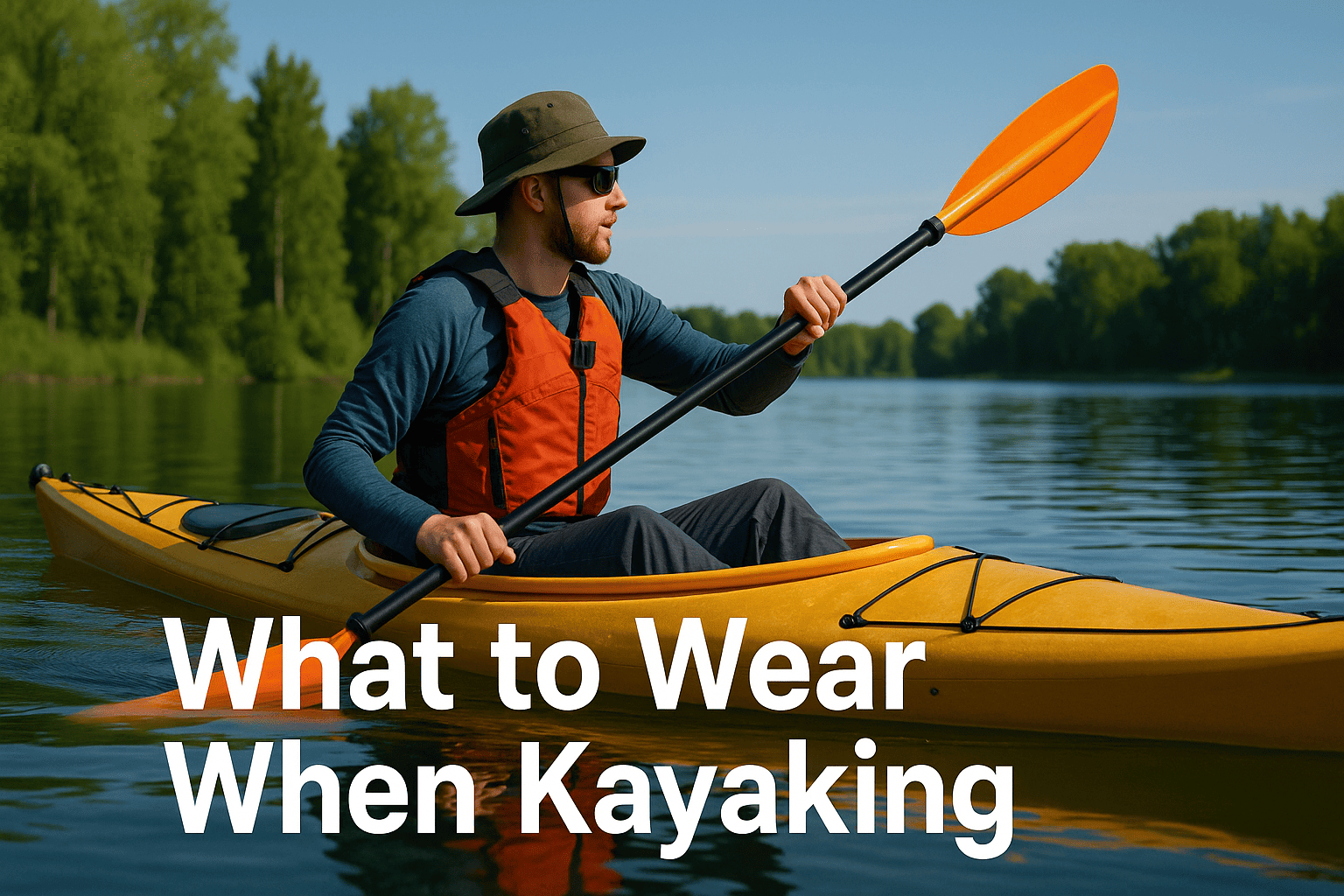
Kayaking is a fantastic way to explore waterways, enjoy the great outdoors, and get a good workout. However, dressing appropriately is crucial to ensure comfort, safety, and an overall enjoyable experience on the water. This guide will cover everything you need to know about what to wear when kayaking, including tips for different weather conditions and types of kayaking adventures.
Table of Contents
Kayaking offers a diverse range of experiences, from serene lake paddling to adrenaline-pumping whitewater adventures. What you wear can significantly impact your comfort, performance, and safety. The right clothing can protect you from the elements, prevent hypothermia, and enhance your paddling experience.
The most critical piece of gear for any kayaker is a Life Jacket or Personal Flotation Device (PFD). Here are key features to look for:
Choosing the right top is essential for both comfort and protection:
Your choice of bottoms will depend on the weather and water temperature:
Layering is key to staying comfortable and safe in varying weather conditions.
In warm weather, focus on lightweight, breathable, and quick-drying clothing:
Cold weather requires more insulation and protection from the elements:
Choosing the right footwear is essential for protecting your feet and ensuring comfort:
For whitewater kayaking, extra protection and specialized gear are necessary:
Sea kayaking demands clothing and gear that can handle long hours and changing conditions:
Wear moisture-wicking thermal layers under a drysuit to stay warm and dry. Avoid cotton as it retains moisture and can lead to hypothermia.
Regular shoes are not recommended as they can retain water, become heavy, and lack the necessary grip. Opt for water shoes or neoprene booties.
The PFD should fit snugly without being restrictive. Adjust all straps and make sure it doesn’t ride up over your chin or ears when pulled upwards.
A helmet is essential for whitewater kayaking or any conditions where there is a risk of hitting your head on rocks or the kayak.
Wear long-sleeved, UV-protective clothing, a wide-brimmed hat, and polarized sunglasses. Apply waterproof sunscreen on exposed skin.
Dressing appropriately for kayaking ensures a comfortable and safe experience, regardless of the conditions. By choosing the right gear and layering effectively, you can enjoy your time on the water to the fullest. Always prioritize safety and prepare for the specific conditions you’ll encounter. Happy paddling!
Technology is revolutionizing the way we hunt and shoot. From GPS mapping and ballistics calculators…
Hunting during cold weather isn’t just about layering up your boots matter. When you’re sitting…
When you’re building or upgrading your AR-style rifle, one of the key decisions you’ll face…
When it comes to tactical rifle scopes, not all optics are created equal. The differences…
In today’s age of high-tech hunting, drones have transformed the way hunters scout terrain, locate…
Every hunter knows that a steady shot can make or break a hunt. Whether you’re…
This website uses cookies.